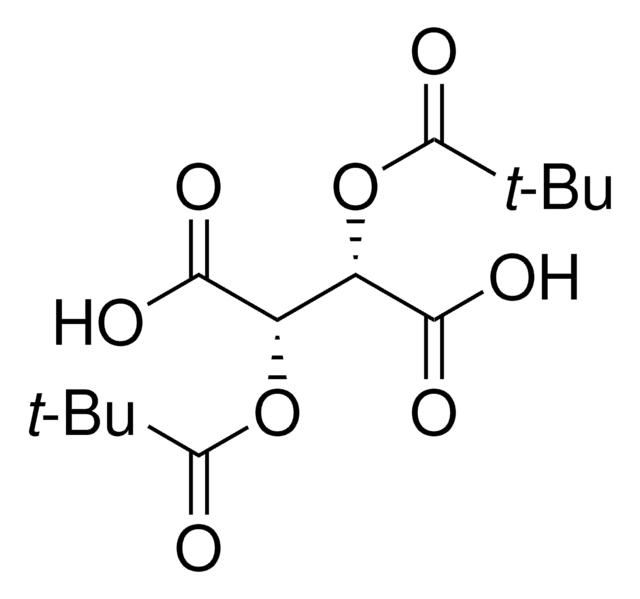67372
Schmelzpunktstandard 283-286°C
analytical standard
Synonym(e):
Anthrachinon
About This Item
Empfohlene Produkte
Qualität
analytical standard
Qualitätsniveau
Dampfdichte
7.16 (vs air)
Dampfdruck
1 mmHg ( 190 °C)
Haltbarkeit
limited shelf life, expiry date on the label
bp
379-381 °C (lit.)
mp (Schmelzpunkt)
283-286 °C (±0.3°C)
284-286 °C (lit.)
Anwendung(en)
food and beverages
pharmaceutical
Format
neat
SMILES String
O=C1c2ccccc2C(=O)c3ccccc13
InChI
1S/C14H8O2/c15-13-9-5-1-2-6-10(9)14(16)12-8-4-3-7-11(12)13/h1-8H
InChIKey
RZVHIXYEVGDQDX-UHFFFAOYSA-N
Suchen Sie nach ähnlichen Produkten? Aufrufen Leitfaden zum Produktvergleich
Allgemeine Beschreibung
The mp value is recorded as an average of 6 to 12 measurements with a Büchi B-545 equipment that is calibrated against primary standards. Melting point is determined by Capillary method, as described in Ph. Eur. 2.2.14.
Anwendung
This product also features as a reference standard in thermal property investigations.
Leistungsmerkmale und Vorteile
- Melting point calibration standard traceable to primary standards (LGC, London)
- Grade: Analytical Standard
- Melting point validated in the thermodynamic mode of analysis
- Standard deviation up to ± 0.3 °C
- Available with certificates of analysis and safety data sheet
Signalwort
Danger
H-Sätze
Gefahreneinstufungen
Carc. 1B - Skin Sens. 1
Lagerklassenschlüssel
6.1C - Combustible acute toxic Cat.3 / toxic compounds or compounds which causing chronic effects
WGK
WGK 1
Flammpunkt (°F)
482.0 °F - closed cup
Flammpunkt (°C)
250 °C - closed cup
Persönliche Schutzausrüstung
dust mask type N95 (US), Eyeshields, Faceshields, Gloves
Hier finden Sie alle aktuellen Versionen:
Analysenzertifikate (COA)
Leider sind derzeit keine COAs für dieses Produkt online verfügbar.
Wenn Sie Hilfe benötigen, wenden Sie sich bitte an Kundensupport
Besitzen Sie dieses Produkt bereits?
In der Dokumentenbibliothek finden Sie die Dokumentation zu den Produkten, die Sie kürzlich erworben haben.
Kunden haben sich ebenfalls angesehen
Unser Team von Wissenschaftlern verfügt über Erfahrung in allen Forschungsbereichen einschließlich Life Science, Materialwissenschaften, chemischer Synthese, Chromatographie, Analytik und vielen mehr..
Setzen Sie sich mit dem technischen Dienst in Verbindung.











